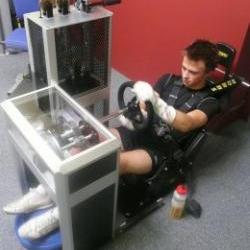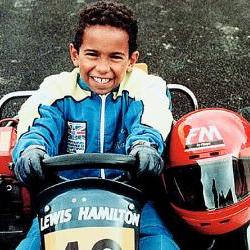Main Menu
Latest Blog Entry
User login
How do I train to become a Formula 1 driver?
With the Formula 1 season now under way, I thought it might be good to hear from someone who works in motor sport about their thoughts on training. Oly Perkin works full time with young go karters. I met him when he attended a few of our coaching courses. It is great to see how he applies his coaching.
How do you train for F1?
 The 2012 F1 season began in Australia last weekend with a win for Jenson Button of McLaren. The physical demands placed on F1 drivers are well documented, and the conditioning of these athletes cannot be overstated.
The 2012 F1 season began in Australia last weekend with a win for Jenson Button of McLaren. The physical demands placed on F1 drivers are well documented, and the conditioning of these athletes cannot be overstated.
The primary challenge of driving at high speed is the notoriously massive gravitational (G) forces exerted on the drivers during corners and under braking. Put simply, G-force is the amount of pressure applied to a body when it changes velocity, and is measured in multiples of body weight.
To give some perspective, astronauts experience ≈3G during take off, F1 drivers experience ≈6G when braking. Understandably, spending up to two hours at a time with your body being pulled around in ever changing directions under loads equaling up to six times your body weight requires an extreme physical robustness not to break down.
Due to regulations and budgets however, drivers don’t actually get much time in the car to adapt to these forces, but a quick Google search of the training modes that F1 drivers adopt will bring up some obvious and logical themes. Neck and grip strength devices to simulate driving are a central pillar, as is a focus on ‘core muscles’, all with the aim of improving G-force tolerance.
Further to that, as this weekend in Malaysia will no doubt highlight, endurance and thermoregulatory capacities require constant attention for drivers to perform with exceptional skill under the pressure of intense racing lasting up to two hours in a hot cockpit.
 Obvious means by which these are addressed include high intensity all body circuit training and multi discipline endurance sports, exemplified by Button being an avid proponent of all things triathlon, and Mark Webber of Red Bull even having his own 5-day 350km adventure race, the Mark Webber Tasmania Challenge.
Obvious means by which these are addressed include high intensity all body circuit training and multi discipline endurance sports, exemplified by Button being an avid proponent of all things triathlon, and Mark Webber of Red Bull even having his own 5-day 350km adventure race, the Mark Webber Tasmania Challenge.
However, before all that is the unavoidable fact that there are only 24 competitors at the top of this sport. To even reach F1, drivers must possess racing accuracy that is almost beyond comprehension.
With a little nod towards the likes of Bloom et al. (1985) and Ericsson et al. (1993), it is not without copious hours of experience honing driving skills, and constant demonstrations of speed, consistency, and nerve that a driver will get the opportunity to even touch an F1 car. And I am purposefully not addressing the associated financial complexities.
So where does this leave a young athlete in motorsport?
 Well, as mentioned, getting the laps in and gaining race experience is crucial as opportunities to progress in motorsport are few and far between. Racing karts by aged 9-10 is considered the norm.
Well, as mentioned, getting the laps in and gaining race experience is crucial as opportunities to progress in motorsport are few and far between. Racing karts by aged 9-10 is considered the norm.
Add this to the fact that a full karting weekend is Friday morning to Sunday evening, and even a modest season will be circa 30 weekends by the time pre-season component testing is factored in. Put simply, the motorsport athlete specializes early and will not get much opportunity to participate in sport that does not involve sitting down.
Although karting is undeniably physical grueling (with no suspension or power steering, and speeds up to 60 mph) it doesn’t allow the athlete to explore the movement patterns that develop basic physical literacy.
Then to cap it off, young drivers are encouraged to emulate F1 drivers by improving arm and grip strength, serving only to exaggerate the gulf between their physical adaptations for driving and their ability to move the rest of the time.
The danger is that you are left with a driver that is fast on the track, but breaks down when it comes to moving on foot, and as mentioned initially, the majority of the training an F1 driver encounters will not take place in the car.
What should a young motorsport athlete do to avoid this over specialisation?
 There is another factor to consider when thinking about a strength and conditioning for a young athlete trying to forge a career in motorsport- the continually evolving nature of the sport.
There is another factor to consider when thinking about a strength and conditioning for a young athlete trying to forge a career in motorsport- the continually evolving nature of the sport.
Motorsport differs from other sports in so far as it is not only the quality of competition that increases the higher up the sport you look, but the actual physical demands and complexity of the sport itself change too.
Each racing formula is a bigger and faster than the formula below it, with the pinnacle obviously being Formula 1.
The most pronounced of these changes will be the step from karting to cars, fundamentally in karts the strength required to turn the wheel is relatively greater than the strength required to withstand G-force, as karts are not as fast as cars.
Howeve,r this is reversed when a driver gets into a car. As mentioned previously, G-force acts on the whole body as its velocity is changing, so will expose the weak links created by the early over specialization into karting.
Summary
All this considered, when training a young athlete who is trying to forge a long term career in motorsport the focus should be on performing movements that in no way emulate driving.
This seems paradoxical, but you have to consider when else the athlete is going to learn how move in the way our bodies were designed to. The model of Long Term Athlete Development provides a clear progression by which to assess an athlete and tailor a young drivers training.
Given how the demands of the sport continually increase, steps missed in the LTAD model will become exposed sooner or later. Although on track success is the yard stick by which a young driver is measured, for it to come at the expense of developing physical robustness is the racing equivalent of qualifying on pole but not refueling the car before the race.
Oly Perkin
References:
Bloom, B.S. (1985). Developing Talent in Young People. New York: Ballantine
Ericsson, K.A., Krampe, R.T., and Clemens, T.R. (1993) The role of deliberate practice in the acquisition of expert performance. Psychological Review 100: 363-406.
Client Testimonials
During the build up to the Beijing Paralympics I was fortunate to be able to train with Excelsior. During this time James delivered a specific eleven month training block to me starting from base fitness up to more complex circuits and exercises. James would always take part in our sessions and this really helped motivate me, as we would push each other to achieve during the sessions. James was flexible around my shift work and would always answer any questions I had, however daft they sounded!
More

